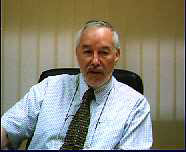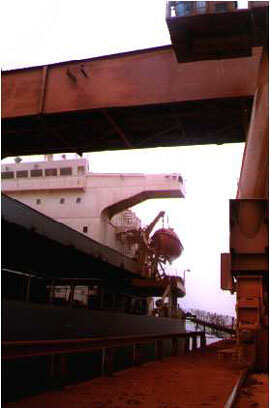 TRANSPORTATION TRANSPORTATION
 AIRLINKS AIRLINKS
Conakry-Gbesia airport is served by SABENA , Air France, Aeroflot, Air Afrique, and Air Guinée, the national carrier. Air Guinée’s only airplane covers the country main cities as well as a few African destinations. Its prices are low, but its service is erratic and departures are unpredictable.
 US DIRECT FLIGHTS TO GUINEA US DIRECT FLIGHTS TO GUINEA
Conakry is only 7 hours away from New York and 6 hours from Europe. Until recently there were not direct links between the US and Guinea. Last year Delta Airlines signed a co-sharing agreement with SABENA, called "Atlantic Excellence". Now American travelers can board a Delta flight in the US and land in Guinea with one stopover in Europe.

This year it is SABENA’s 75th anniversary. To celebrate it, SABENA has replaced its fleet with airbus 330/300, increasing its passenger capacity by 46%. The Belgian airline has been established in Guinea since 1969, and has never left it despite hard times during Sekou Touré’s regime. Today SABENA flies 3 times a week to/from Brussels, but according to soft spoken Mr. Van Steen, Director General of SABENA in Guinea, flights might be increased to 4 by next year. This is part of the aggressive expansion policy of this airline in Africa, where it already serves 20 cities. Four star Hotel Camayenne in Conakry, is part of the selected chain of hotels the airline owns, although it is managed independently.
 SEALINKS SEALINKS
But the real entrance gate to Guinea is the Autonomous Port of Conakry (PAC). In fact, 90% of Guineas trade goes through it. The port’s life is deeply intertwined to the economic health of the country, especially to the mining sector, since 60% of the merchandise that leaves its docks are mining products. Thus, between 1996 and 1997 the port’s traffic decreased 9% due mainly to the exploitation difficulties faced by mining societies such as SBK and Friguia who were affected by the steady decrease of international bauxite prices. Nevertheless from 1992 to 1997 sea trade increased 10%, reaching 3,7 million tons. The trafic of shipping containers registered in the same period an increase of 72%. |

Conakry’s port celebrated its first centenary in 1995, however it is only recently that it has been able to compete with other ports of the region by considerably reducing its tariffs. The main changes were performed during the so-called Second Port Project (1989-92). US$100 million was invested to expand the port capacity: an 80,000 sq meter container terminal was constructed, the access channel was dredged, and an oil wharf was built. Plans to double its present capacity and to modernize its structures and technology will have an additional cost of US$60 million.
PAC’s future, if everything goes as planned will be rosy. The government foresees a GDP increase of 5% by the year 2010. Mr. Aliou Diallo, General Director of the Autonomous Port of Conakry is quite optimistic about its future, but he is quite realistic too and ties the progress of the port to that of his country. Two conditions have to be met. First, production and exports of bulk goods such as agricultural products, bauxite, iron, etc have to increase steadily. Second, land communications have to be improved, especially roads to production areas or to natural markets such as Bamako, in Mali, whose natural exit to the sea is the Autonomous Port of Conakry. |

